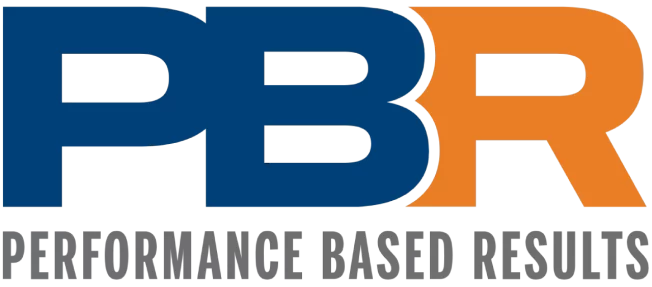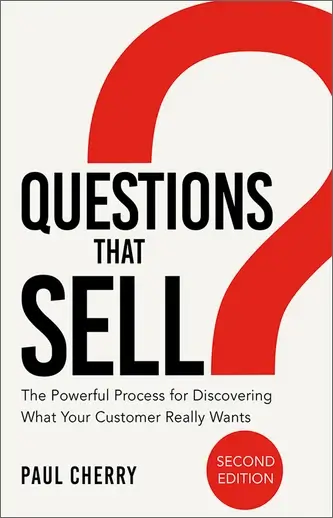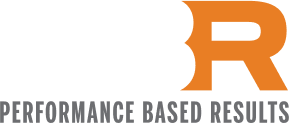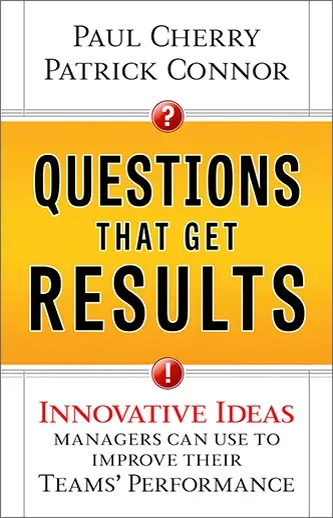Delivering a compelling sales strategy presentation goes beyond having a well-structured plan, and it necessitates an approach that captivates your audience and motivates them to take action.
Engaging your listeners entails striking a delicate balance between storytelling, visuals, and interactivity, all nurturing a sense of connection and stimulating interest. Knowing your audience is paramount.
Tailoring your presentation to address their needs, interests, and pain points creates relevance and demonstrates your understanding of their unique challenges.
This personalized approach captures attention and establishes credibility, making your audience more receptive to your message. Next, weaving storytelling into your presentation can significantly enhance engagement.
Stories resonate with people on an emotional level, making complex ideas easier to grasp and remember.
Incorporating real-life examples or case studies allows your audience to envision the potential impact of your sales strategy, transforming abstract concepts into relatable narratives.
Understanding the Importance of Sales Strategy Presentations
Sales strategy presentations serve as a bridge between ideas and execution, transforming concepts into actionable plans. Understanding their importance is key to driving success in any organization.
These presentations are even more critical for teams specializing in niche markets, such as equipment sales. Equipment sales training, for instance, is often a key component of these sessions, equipping salespeople with the knowledge they need to sell products and understand the technical details that matter to their clients.
A well-crafted sales strategy presentation fosters engagement, clarity, and collaboration, enabling stakeholders to grasp the overarching goals and individual roles in achieving them. By emphasizing the significance of effective presentations, organizations can empower their teams to navigate the competitive landscape with confidence and purpose.
5 Best Practices for Designing Your Presentation
Creating an impactful presentation involves more than just compiling information; it requires thoughtful design that resonates with your audience. The way you present your ideas can significantly influence engagement and retention.
A well-designed presentation captures attention and conveys messages clearly and effectively. Presenters can elevate their content by focusing on essential elements such as layout, visuals, and storytelling, ensuring it resonates and inspires action.
1. Structuring Your Content Logically
When designing an effective presentation, structuring your content stands out as a foundational element. A clear, coherent structure helps convey your message and guides your audience through the information you present.
By organizing your content thoughtfully, you create a roadmap that allows listeners to follow along effortlessly. Begin by outlining your main points before diving into the details. This roadmap will serve as the backbone of your presentation, ensuring that each segment builds upon the last.
Start with an engaging introduction that outlines the purpose of your presentation and what the audience can expect to learn. This sets the stage for what is to come and piques their interest.
2. Keeping It Concise
Keeping your presentation concise is a critical aspect that can significantly enhance its effectiveness. In a world where attention spans are increasingly limited, presenting your ideas clearly and succinctly ensures that your audience remains engaged and retains the information you share.
This is especially important in shaping a strong sales culture, where communication must be straightforward and impactful to motivate and guide the team effectively.
Focus on the core ideas that align with your presentation’s objectives. You can streamline your content by prioritizing essential information and avoiding unnecessary tangents. This clarity benefits your audience and helps you maintain focus throughout your delivery. Utilize bullet points or short, impactful statements to communicate your ideas.
This format lets your audience absorb information quickly, minimizing the risk of overwhelming them with excessive details. Aim for simplicity in your language and structure, which will facilitate comprehension.
Remember, the goal is to communicate effectively, not to impress with jargon or complex terminology.
3. Using Data to Support Your Points
Using data to support your points is a powerful way to enhance the credibility and impact of your presentation.
In today’s business environment, decisions are often driven by data, and presenting well-researched, relevant information can reinforce your arguments, making them more persuasive.
The first step in incorporating data is to ensure that the information is accurate and up-to-date. Reliable data sources, whether industry reports, case studies, or internal analytics, are key to building trust with your audience.
Presenting outdated or inaccurate data can undermine your credibility and weaken your message. Once you’ve gathered your data, present it in a way that’s easy to understand. Charts, graphs, and infographics are excellent tools for visualizing complex information.
They allow you to distill large amounts of data into a digestible format, enabling your audience to quickly grasp trends, comparisons, and key takeaways.
4. Engaging with Interactive Elements
Engaging your audience through interactive elements can significantly enhance the effectiveness of your presentation.
Traditional presentations often rely heavily on a one-way flow of information, which can lead to disengagement. By incorporating interactive components, you can create a dynamic environment that encourages participation and keeps your listeners invested in the content.
One of the most effective ways to foster interaction is to ask questions throughout your presentation. This approach stimulates thought and invites audience members to share their perspectives.
Questions can be direct or open-ended, allowing for various responses that can enrich the discussion. Acknowledging contributions creates a sense of community and collaboration, making your audience feel valued and engaged.
5. Practicing Your Delivery
Practicing your delivery is a pivotal aspect of designing a successful presentation. Even the most well-structured content and engaging visuals can fall flat without effective delivery. Honing your presentation skills is essential to truly connecting with your audience.
This process involves more than simply reciting your material. It encompasses timing, body language, voice modulation, and emotional engagement. Begin by rehearsing your presentation multiple times.
Familiarity with your content will boost your confidence and help you deliver your message smoothly. Aim to practice in front of a mirror or record yourself to observe your posture and gestures.
This allows you to fine-tune your nonverbal communication, which can greatly influence how your audience perceives your message. Positive body language, such as open gestures and eye contact, fosters a connection with your listeners, making them feel more engaged and valued.
5 Tips To Create An Engaging Sales Presentation
Crafting an engaging sales presentation is vital for capturing your audience’s attention and driving impactful results. Connecting with your listeners not only enhances their understanding but also fosters an environment where they feel compelled to take action.
A thoughtful approach is required to achieve this, focusing on clarity, relevance, and interaction.
By weaving together compelling narratives, relatable examples, and captivating visuals, you can transform your presentation into an experience that resonates deeply with your audience, ultimately leading to more meaningful conversations and successful outcomes.
1. Start with a Hook
Beginning your sales presentation with a captivating hook is an art that can set the tone for the entire session. This initial moment is crucial for capturing your audience’s attention and sparking their interest immediately.
A well-crafted hook acts as a gateway, drawing your listeners in and encouraging them to engage with the content you’re about to present.
Various techniques exist to create an effective hook. One powerful method is to pose a thought-provoking question that resonates with your audience’s needs or pain points. This piques their curiosity and prompts them to consider how your offering could provide a solution.
Alternatively, sharing a striking statistic or a surprising fact about your topic can grab attention and establish a sense of urgency. When people hear numbers highlighting a problem or opportunity, they are more likely to focus on what you say.
2. Encourage Participation
Encouraging participation during your sales presentation can transform a one-way dialogue into an engaging conversation.
Inviting your audience to share their thoughts, ask questions, and express their opinions creates an interactive environment that fosters connection and understanding.
This enhances the overall experience and deepens the impact of your message. One effective way to stimulate participation is through open-ended questions.
Rather than simply asking for yes or no answers, frame your questions to invite discussion and reflection. For example, you might ask, “What challenges have you faced in your current sales process?”
This approach encourages audience members to share their experiences, making them feel valued and involved in the conversation. As they share their thoughts, you gain valuable insights into their needs and preferences, allowing you to tailor your presentation to address their concerns.
3. Use Real-Life Examples
Incorporating real-life examples into your sales presentation can significantly enhance engagement and relatability. When you illustrate your points with concrete stories, case studies, or testimonials, you connect your audience and the concepts you are presenting.
This strategy not only makes your message more memorable but also helps to build credibility. Real-life examples serve as powerful tools for demonstrating the effectiveness of your product or service.
For instance, instead of merely stating that your software improves productivity, share a success story from a client who saw measurable results after implementing it.
Describe their initial challenges, how they utilized your solution, and the specific outcomes they achieved. This narrative approach allows your audience to envision themselves in a similar scenario, fostering a deeper understanding of your offering’s value.
4. Adapt to Audience Reactions
Reading the room and responding to the audience’s feedback can transform a standard pitch into a captivating dialogue that resonates with listeners.
By being attuned to verbal and non-verbal cues, you can tailor your delivery to meet your audience’s specific needs and interests. One effective way to gauge audience reactions is through observation.
Pay close attention to body language—crossed arms may indicate defensiveness while nodding heads signal agreement. Additionally, monitor facial expressions; a furrowed brow could suggest confusion or skepticism.
By interpreting these cues, you can adjust your presentation in real-time, clarifying points that may have caused uncertainty or emphasizing aspects that appear to excite your listeners.
5. End with a Strong Call to Action
Concluding your sales presentation with a strong call to action (CTA) is essential for transforming interest into tangible results.
This final element bridges your presentation’s content and the desired outcome, motivating your audience to take the next step. A well-crafted CTA encapsulates the essence of your presentation while providing clear guidance on what your audience should do next.
Incorporating an emotional appeal can also significantly boost the impact of your CTA. Emotions often motivate people, so consider tapping into their aspirations, desires, or fears.
For instance, you might evoke a sense of urgency by emphasizing how acting now can lead to immediate benefits or prevent missed opportunities. This emotional connection can make your audience feel more compelled to respond.
Conclusion
In wrapping up our exploration of best practices for delivering an engaging sales strategy presentation, the art of connection clearly plays a vital role in ensuring that your message resonates with your audience.
By integrating the strategies discussed—crafting a compelling narrative, leveraging data, and fostering audience interaction—you create a dynamic environment where ideas flourish and connections deepen.
Ultimately, your sales strategy presentation is not just about conveying information; it’s about igniting inspiration and motivating action. By employing these best practices, you convey your ideas effectively and foster a sense of excitement and urgency that propels your audience toward their next steps.
Embrace these strategies, and watch your presentations evolve into powerful catalysts for connection and conversion.






